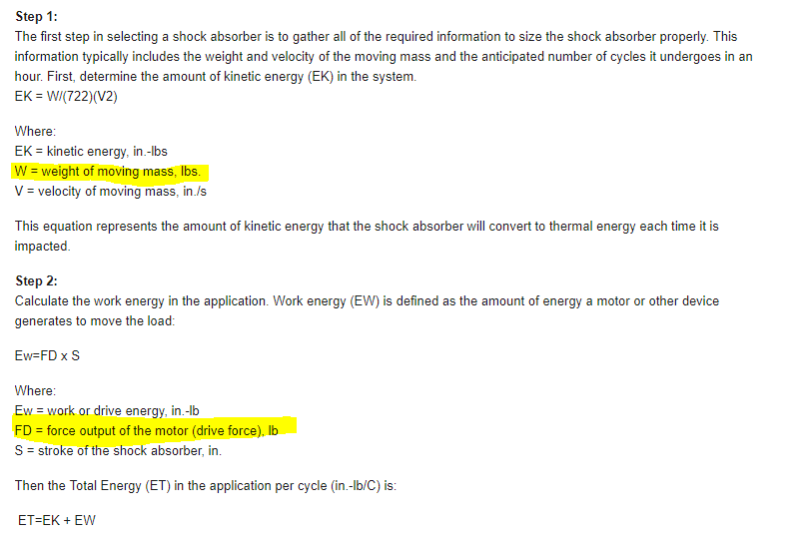I'm trying to size a shock absorber for a seat. I found a helpful website but when on step 2 shown below, I don't see what is meant by the drive force. Is this just the weight x 9.81?
Isn't the weight already covered in step 1? Also, if there is a g force. Isn't the weight in step 1 and 2, multiplied by the g force?

Isn't the weight already covered in step 1? Also, if there is a g force. Isn't the weight in step 1 and 2, multiplied by the g force?

